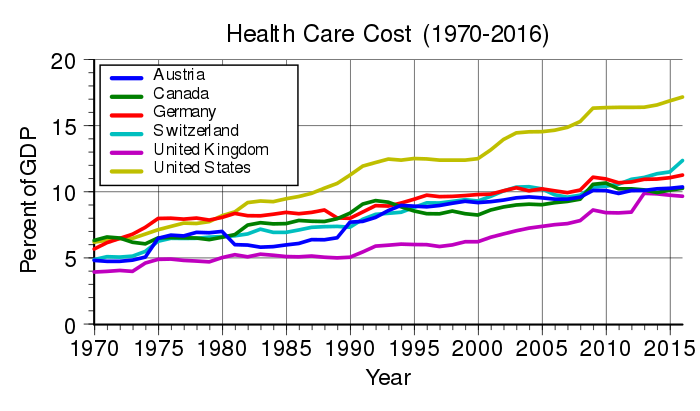Consider these two facts:
- The United States spends more per capita on healthcare than any other nation.

2. The United States is the only developed country in the world where life expectancy has declined in recent years.

How does one square these two seemingly contradictory facts? Could it be that more healthcare can actually contribute to lower life expectancy?
US healthcare expenditures have long led the world. Back in the 1970’s the US was in the middle of the pack compared to other countries, but since 1980 we are number one. We’re now at the point we spend almost twice what other counties spend. So, this has been a thirty-year trend.
But the decline in life expectancy is recent. When we compare total life expectancy to other developed countries, we have always lagged a bit. The Japanese have outlived us for decades. But the last two years of declining US life expectancy are remarkable. When the details are teased out, the US decline can be attributed to a dramatic rise in early deaths, specifically in middle-age (45-54) non-hispanic white males. This started in the late 1990’s and continues. The increase in deaths is attributed to accidental overdose, suicide and alcohol related diseases; the diseases of despair. And when the population is further refined, this increase is even more dramatic in non-college graduates. Advanced education saves lives. Maybe it relieves despair. Higher education does promote long-term employment and thus makes employer-based healthcare more reliable.

Opioid prescribing started to go up sharply in the 1990’s. Doctor-written prescriptions for narcotics more than doubled from 1999-2011. Thankfully, it has gone down significantly in recent years with all the talk of the “Opioid Epidemic”. But I believe we can lay a lot of the blame for the recent increased mortality in this country in the lap of the medical profession. Big Pharma will get their share of the blame, but they just make the drugs; doctors prescribe.
But it’s not just the narcotic prescribing we doctors do that can harm people. We can test you into anxiety, even bankruptcy. Or we can operate on you with the promise of a life free of pain. After all, US healthcare is the best in the world, isn’t it?
Some people are cured, some pain is relieved, but has American healthcare reached the point of too much of a good thing? If we have too much, why do we over-consume?
Overtreatment (defined as care provided that causes harm) is studied. It’s higher than you think. Why would the market-driven business of healthcare sell more product than serves the health of the customer? Maybe I’m naive to think healthcare is different than fast food. Further, why would consumers (patients) buy unnecessary or harmful care?
Some may be due to perceived scarcity. We all fear the day we have a tragic accident or dismal diagnosis and inadequate insurance coverage. So, grab what you can when you have the chance; not a healthy strategy. Such a mindset is unavoidable when health insurance is unreliable.
Idaho’s fifth annual Healthcare Summit concluded this week. Six years ago, Roger Plothow, former publisher of the Idaho Falls Post Register decided such a get together would be a good idea. Get the leaders of one of Idaho’s largest and fastest growing economic sectors together and see if they can align their incentives. The conference is sponsored and attended by all the major insurers, healthcare systems, professional groups and even some legislators. Heck, Governor Little spoke over lunch.
There is hope, but a lot of work to do. Idaho has disparate communities, from frontier towns with a county ten-bed hospital to huge systems in the Treasure Valley and Eastern Idaho. But a small state with strong leadership can turn things. We just need to agree on where we need to go.
